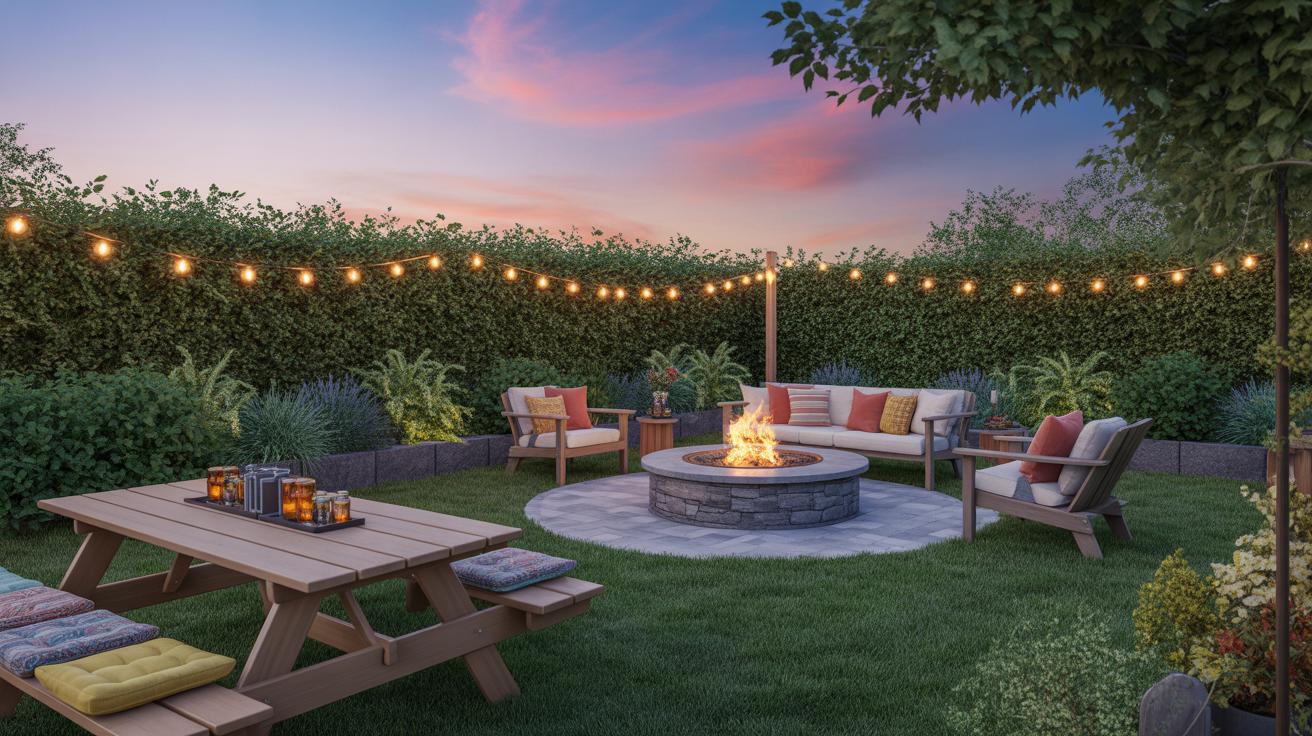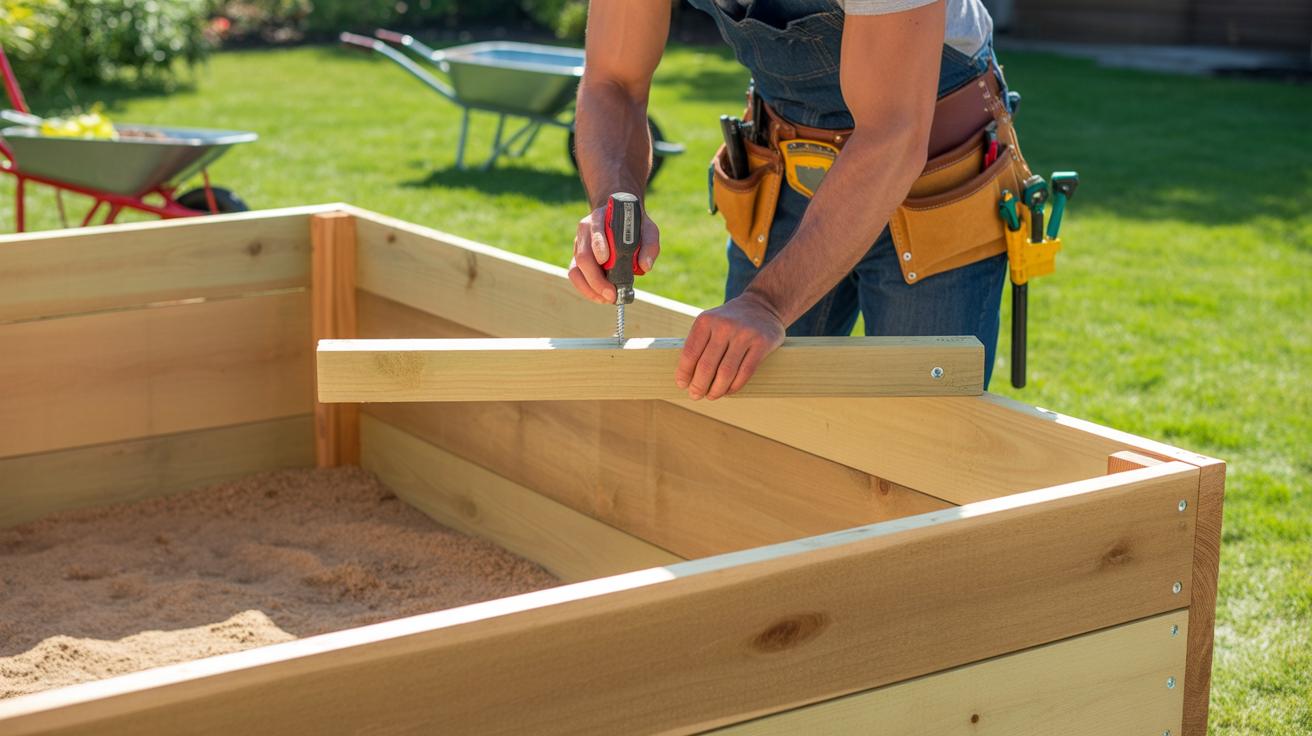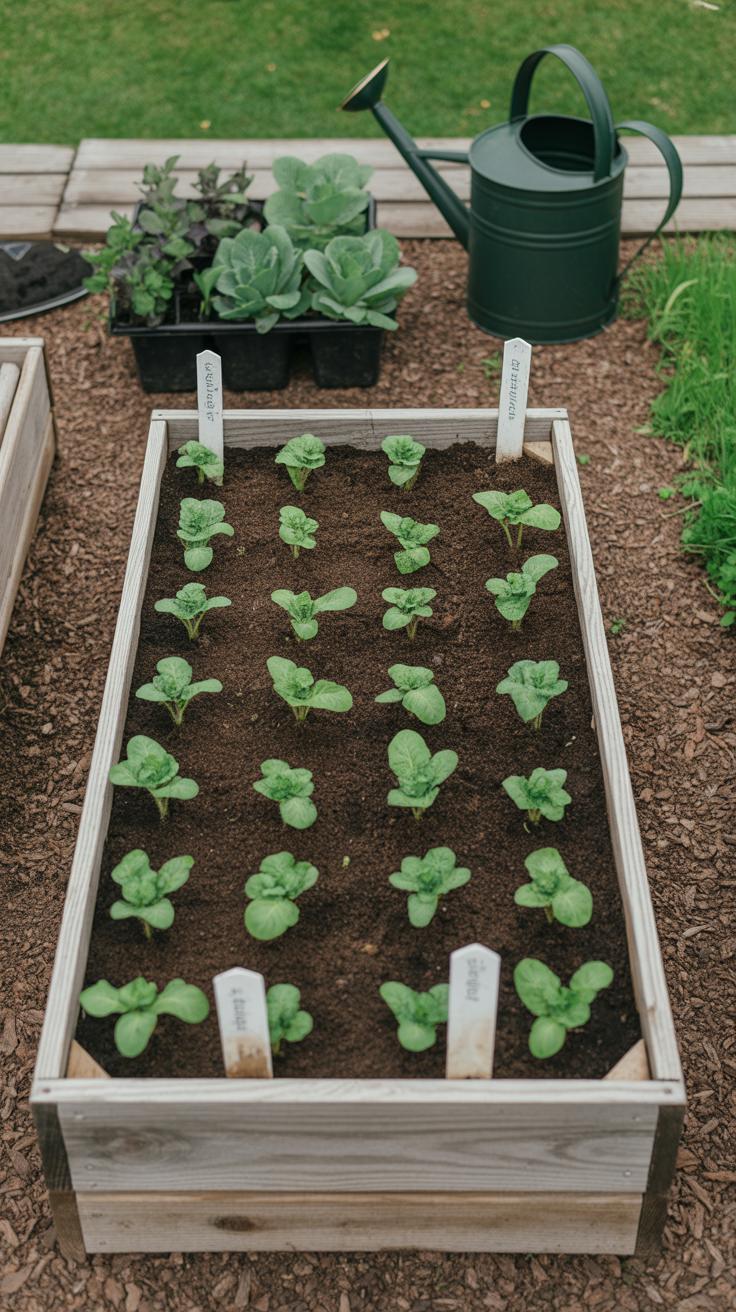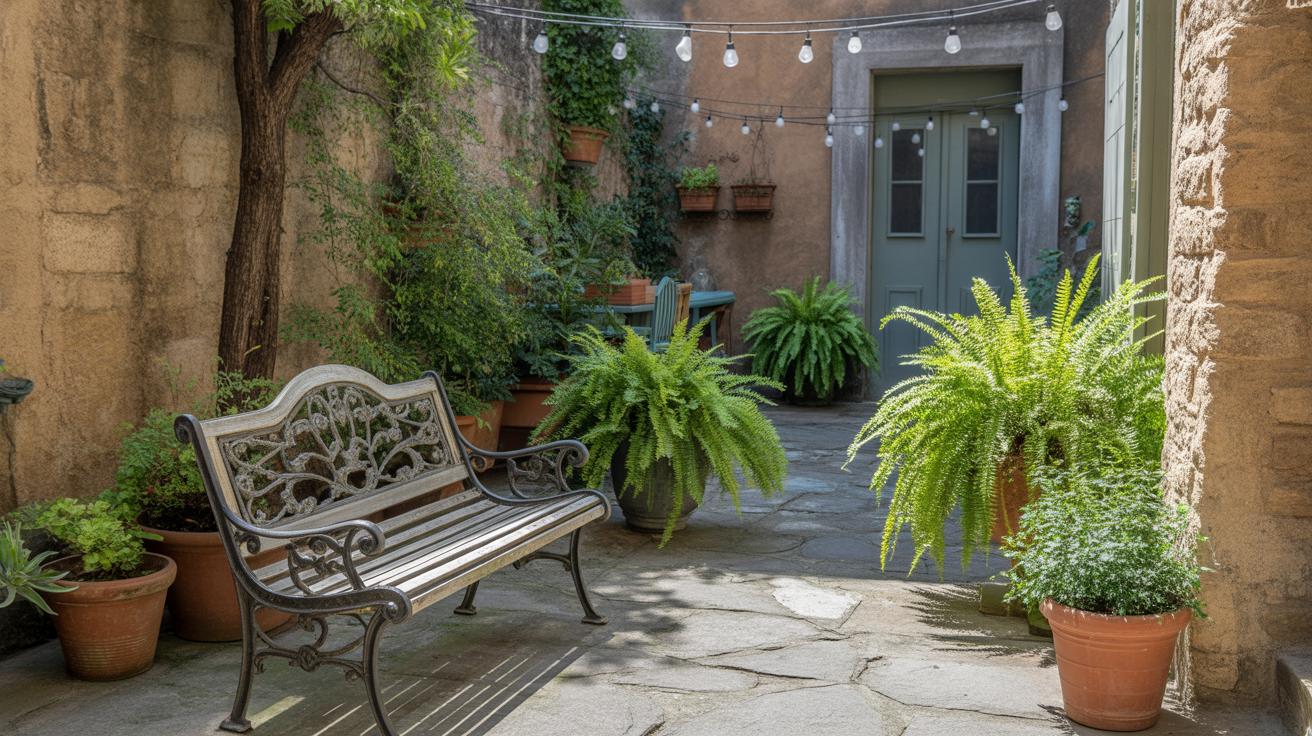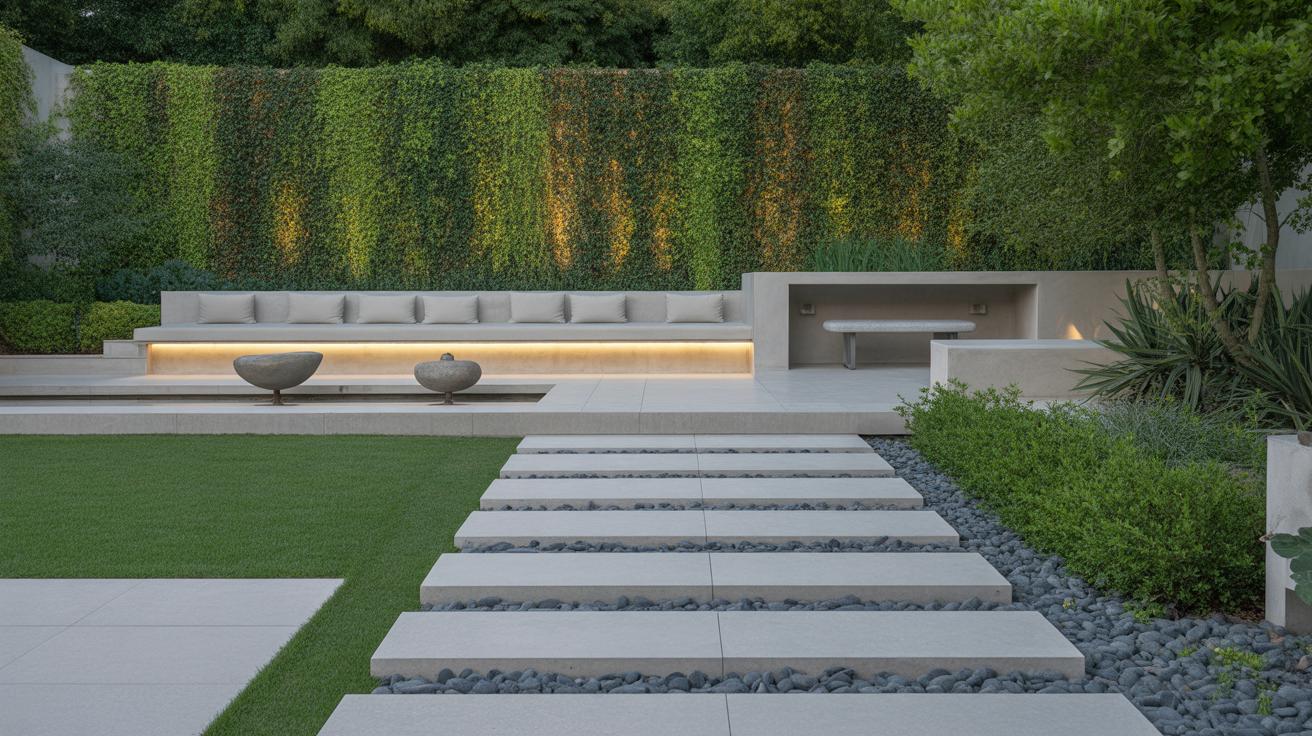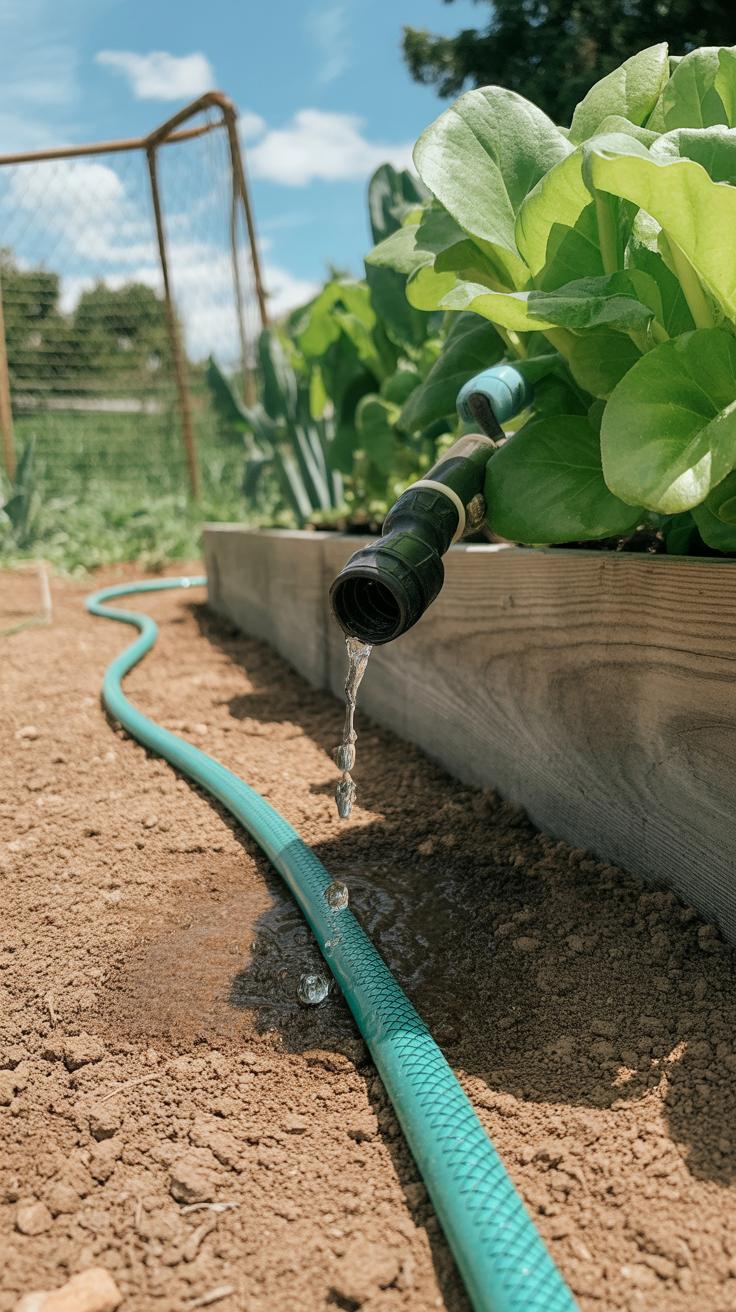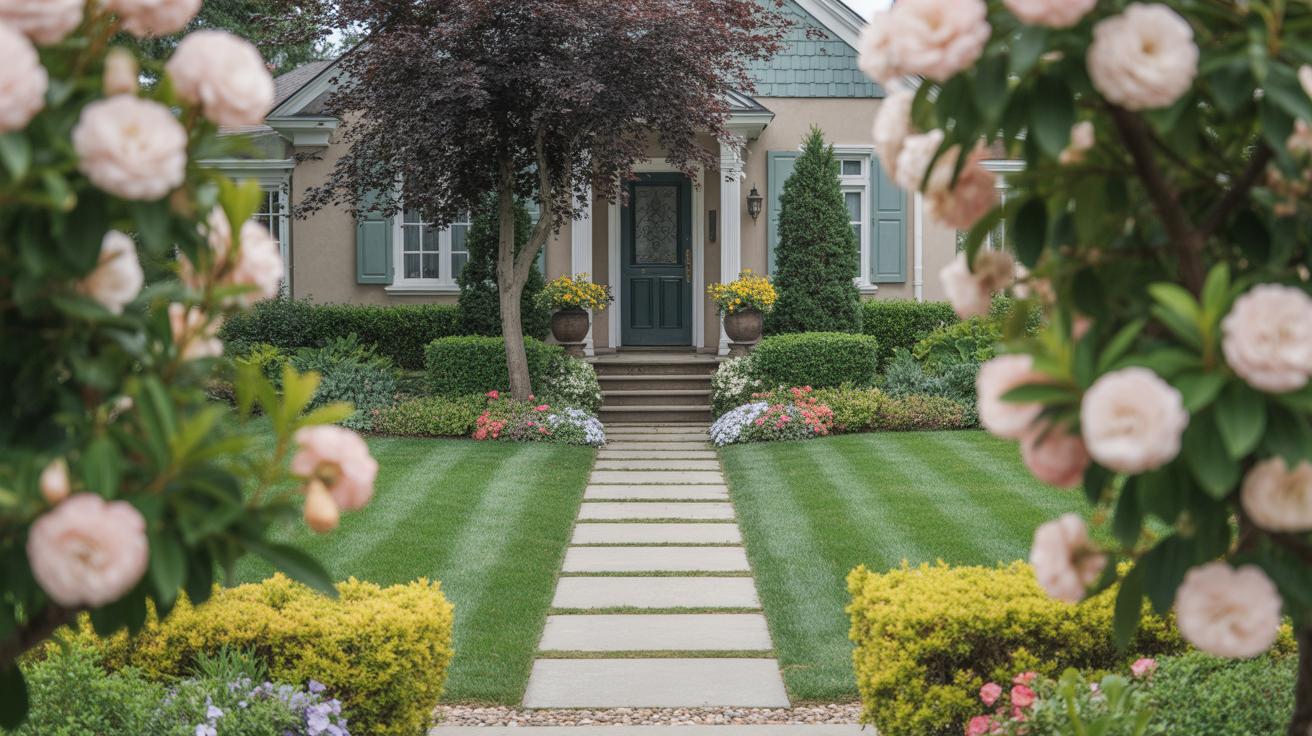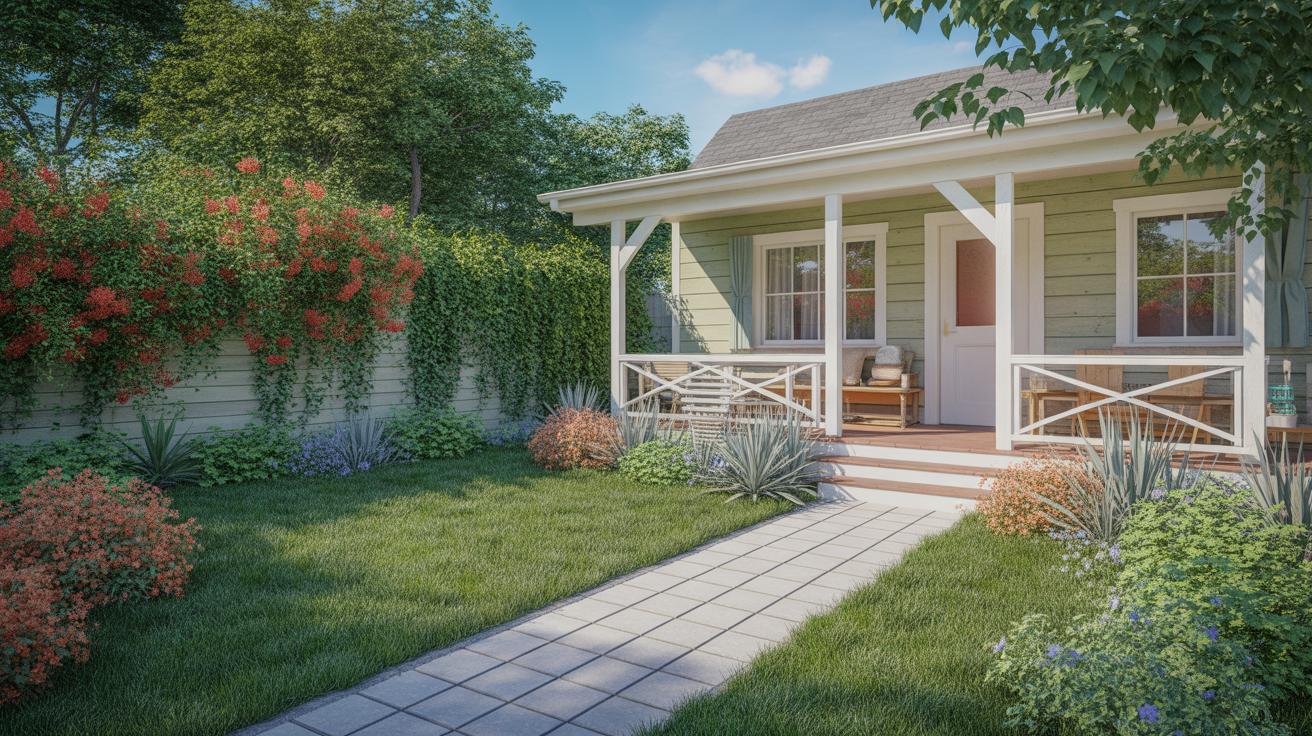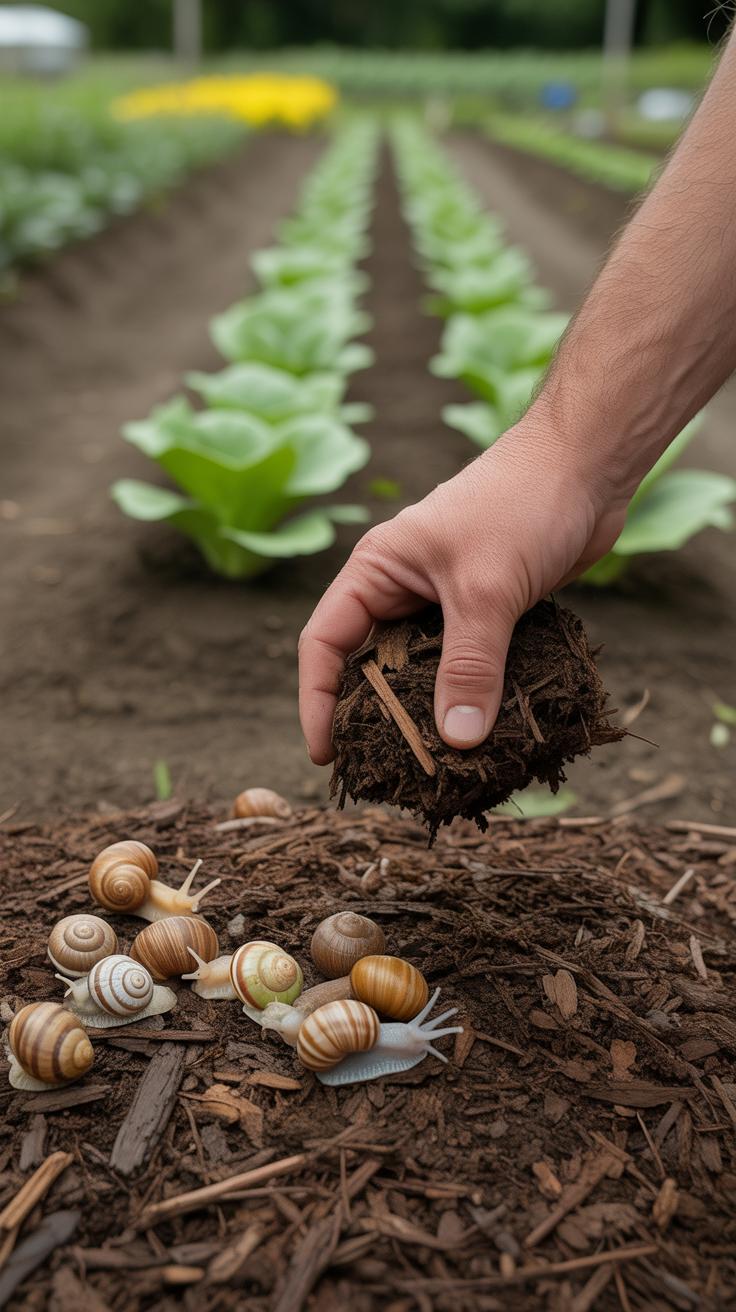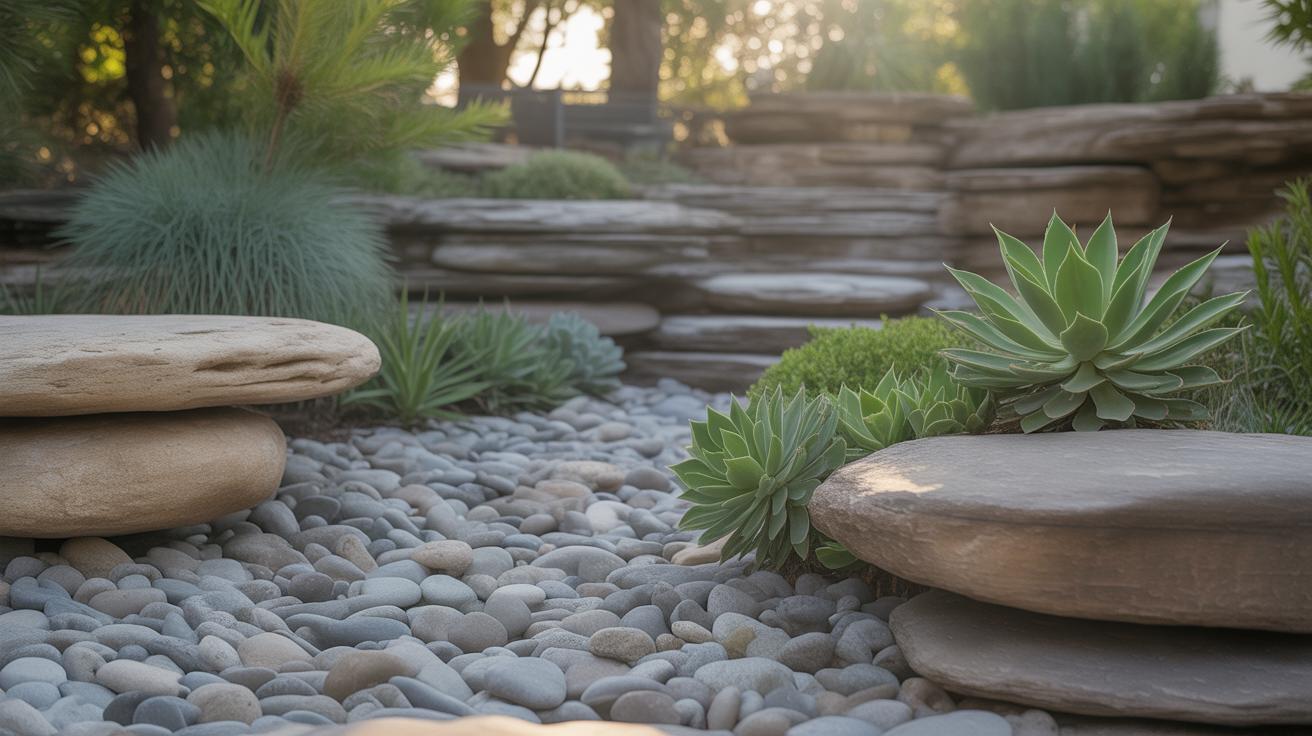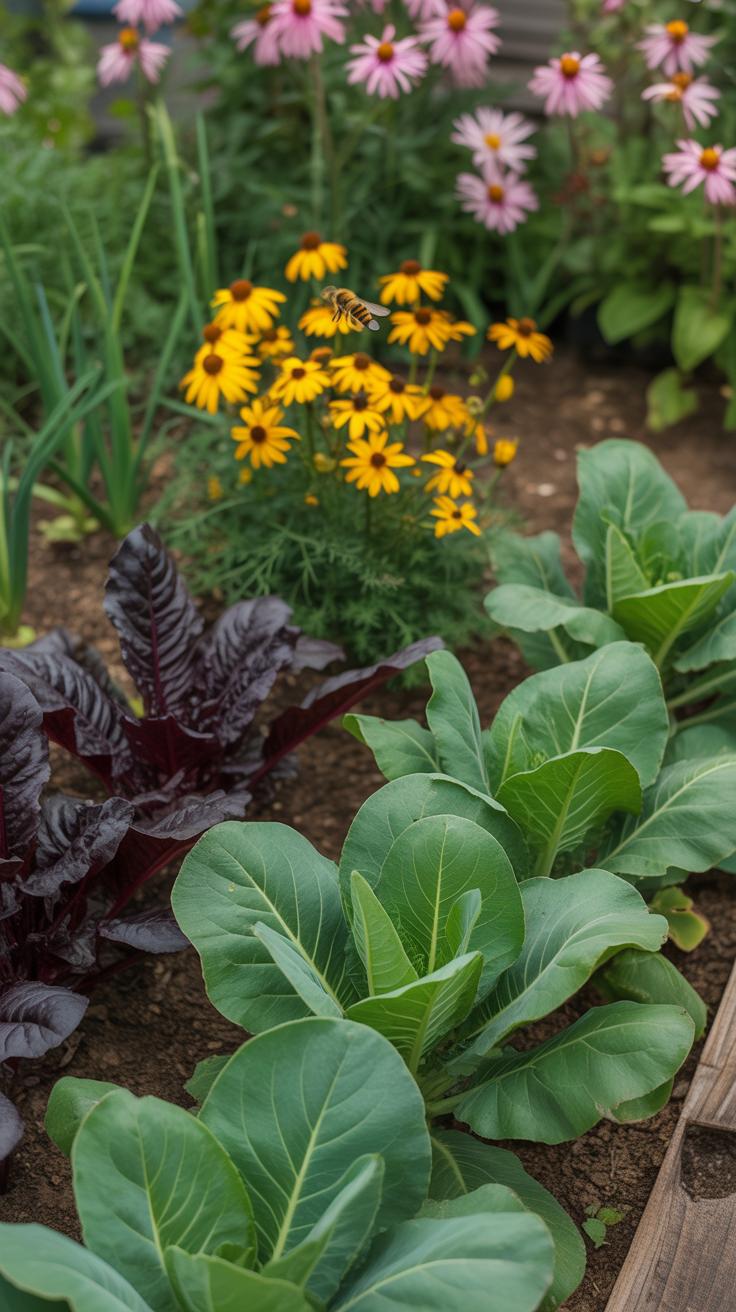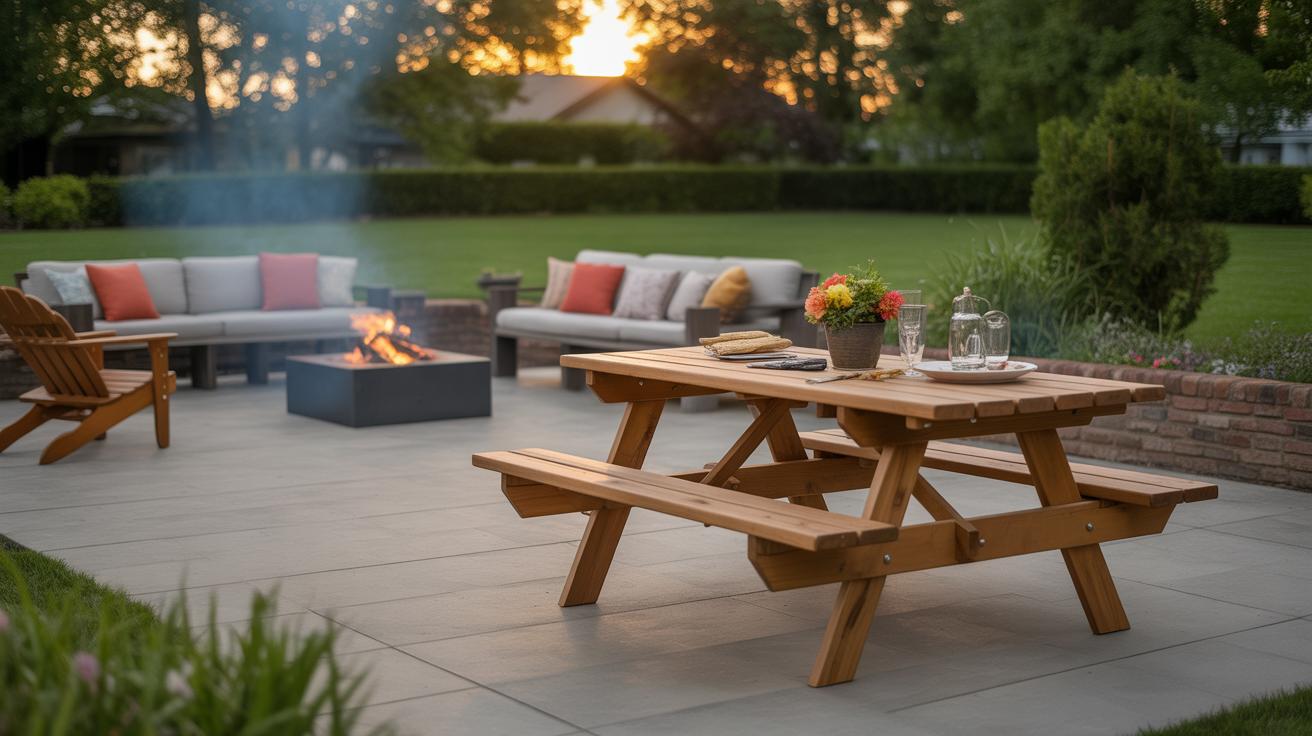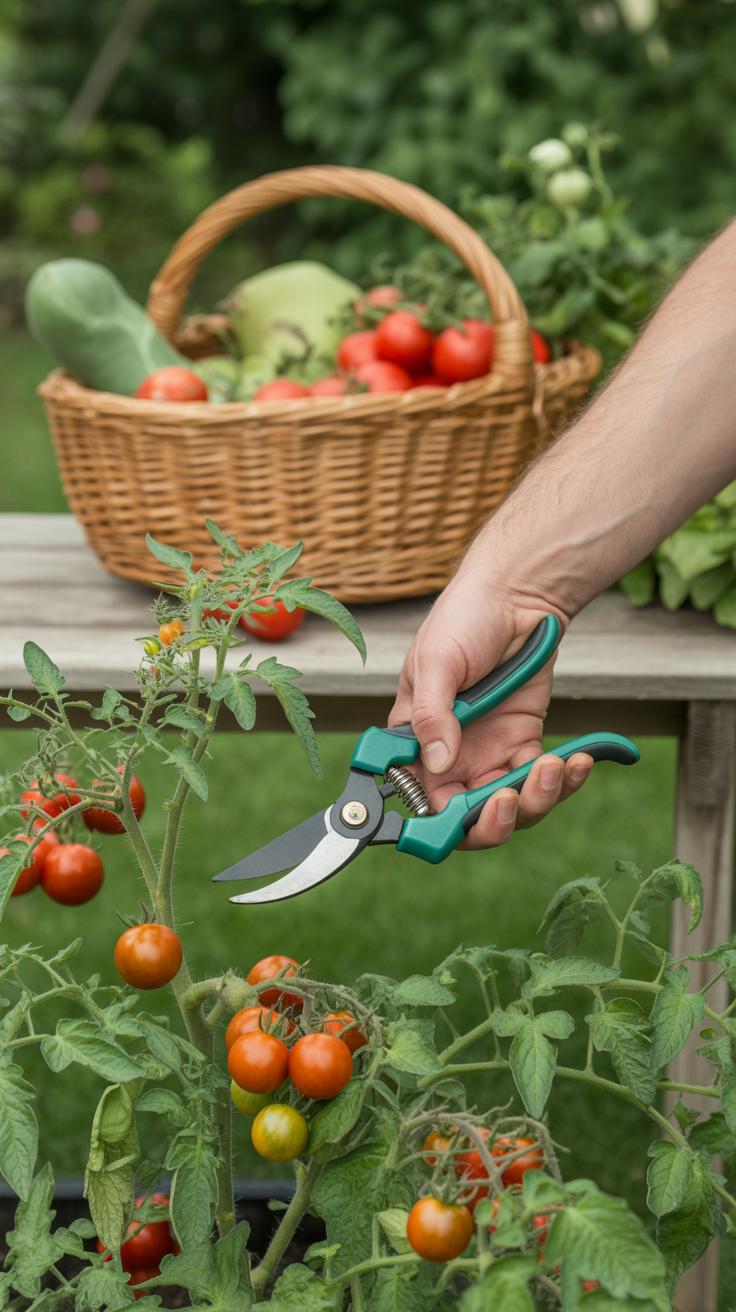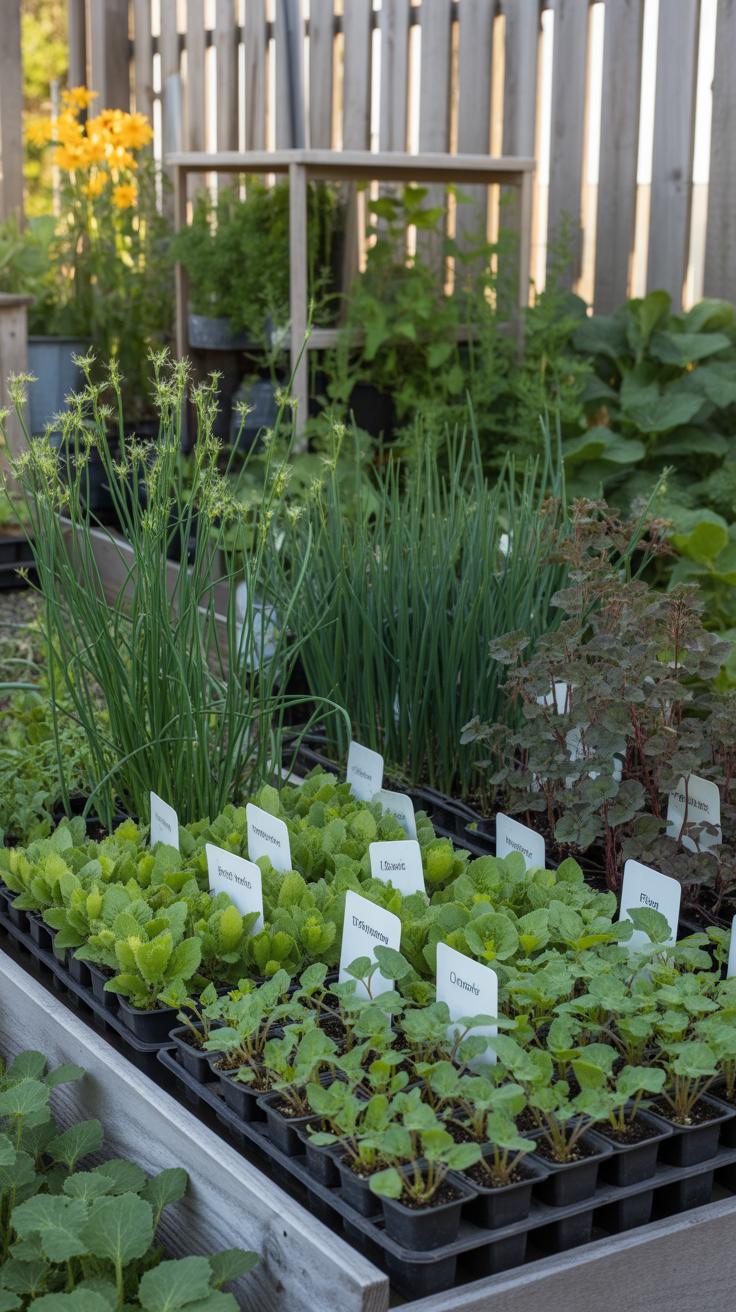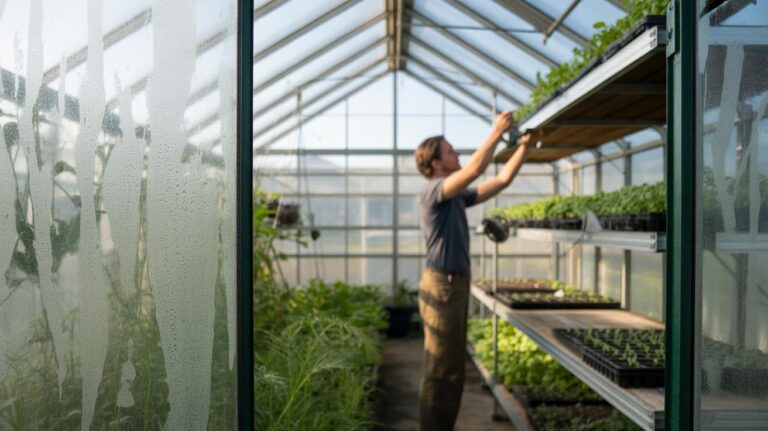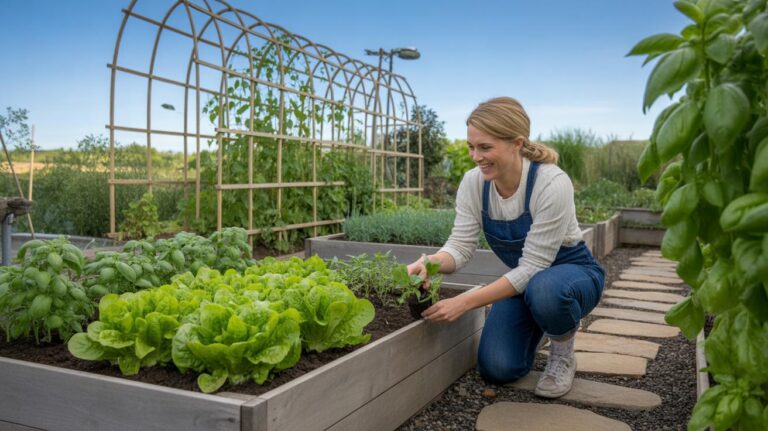Introduction
Raised garden beds offer a practical way to grow vegetables and plants efficiently by elevating the soil above the ground. This method allows better control over soil quality, moisture, and temperature which can result in healthier plants and higher yields. The compact nature of raised beds lets you use your garden space intensively, minimizing weeds and maximizing growth potential.
This article explores practical ways to maximize the yield of your raised garden beds. You’ll learn about the best materials, soil management, planting techniques, and maintenance tips. Whether you are new to gardening or want to get more from your garden space, these clear strategies will help you grow more successfully.
Materials and Construction of Raised Garden Beds
When building raised garden beds, the choice of material shapes not only the look of your garden but also how well your plants grow over time. Wood tends to be popular because it’s easy to work with and gives a natural feel. Untreated cedar or redwood resist rot longer and don’t leach chemicals into the soil, which makes them good for growing edibles. But wood does need upkeep—think occasional sealing or replacement of worn boards.
Stone or brick beds look solid and last decades, but they can be heavy and costly to install. They don’t break down or affect soil chemistry but may warm up slower in spring, which can influence planting schedules. Concrete blocks are similar—tough but sometimes tricky because newer concrete mixes can raise soil pH, though that might not be a problem if you grow plants that like alkalinity.
Plastic beds, especially those made of food-grade recycled plastic, last long and resist pests or rot. They don’t breathe, so soil inside might dry out faster, requiring more watering. Some plastics aren’t safe for edibles because they leach chemicals, so be sure to check their rating and consider liners to protect the soil and roots.
Choosing materials also involves maintenance habits. Stone and concrete demand less ongoing work, but if space and budget are tight, wood or plastic might be friendlier. Also, think about climate—wood rots faster in wet areas, and plastic can get brittle in extreme cold. It’s a trade-off, really.
When it comes to size and shape, raised beds should fit your space and your routine. Narrow beds—about 3 to 4 feet wide—ensure you can reach the middle without stepping in, which protects soil structure. Length depends on your access and garden shape, but shorter beds reduce heavy bending.
Square or rectangular beds tend to work best for organizing plants and managing irrigation. But maybe, if your garden’s oddly shaped, L-shaped or circular beds could save space. The key is balancing maximum growing area with easy reach and maintenance, so you don’t dread tending your garden.
Have you noticed how sometimes choosing materials feels guided by what’s sitting in your backyard or a discount at the hardware store? It’s tempting. Still, a bit of planning—especially about safety and durability—prevents headaches later. And it’s worth thinking through how your choice will affect soil health and plant growth over time.
Soil Preparation and Management
Good soil really makes a difference in raised garden beds. When you mix compost and organic matter into your soil, you’re not just adding nutrients but also improving how well water drains. Drainage can be tricky sometimes—I’ve seen water puddle in beds that were neglected, and plants just sulk. Adding compost helps the soil hold moisture without becoming soggy. It’s about balance.
Creating a nutrient-rich soil mix means blending garden soil with plenty of compost and possibly other organic materials like shredded leaves or aged manure. This mix supports beneficial microbes that break down nutrients, making them available to your plants. I once tried just regular soil, and the difference after adding compost was striking—plants grew stronger, yields increased.
Maintaining soil health over time demands some effort. Crop rotation is key—switching what you grow next to prevent certain nutrients from being drained out and pests from settling in. Mulching your beds also locks in moisture and slowly adds organic matter as it breaks down. Without this care, soil can get tired, which might be easy to overlook until your plants start lagging.
Optimizing Plant Spacing and Layout
Planting vegetables closer together in raised beds can feel a bit counterintuitive at first. You might worry they’ll compete too much for nutrients or air. But when done thoughtfully, tighter spacing actually works in your favor. Grouping plants in geometric patterns creates small microclimates—areas where heat is retained and wind is blocked, helping plants thrive. These pockets can gently hold moisture in the soil and shield roots from temperature swings.
Closer rows also discourage weeds by shading the soil. The dense canopy naturally limits sunlight reaching weed seeds, so you spend less time wrestling with intruders. Your soil stays cooler and damper beneath a lush cover, which helps important microorganisms stay active.
Benefits of Close Planting
There are some practical reasons why plants cuddling up feels right:
- Soil moisture stays steadier since leaves shade the earth.
- Less space for weeds means less weeding, which is always welcome.
- Good airflow is maintained if you avoid overcrowding, so diseases don’t get out of hand.
- Closer plants can actually support each other physically during wind or rain.
I once tried planting cherry tomatoes and basil quite near each other, and was surprised at how the basil seemed to protect the tomatoes from drying out too fast. It wasn’t perfect, but it was something worth paying attention to.
Using Square Foot Gardening Techniques
Square foot gardening offers an inviting framework to arrange close plantings without chaos. Breaking your bed into one-foot sections helps you allocate the right number of plants per space based on their size. It’s a neat way to fit a lot in without overcrowding.
For example, lettuce might be packed in nine per square foot, while larger carrots get just one or four in that same area. This method makes it easier to plan and visualize your layout, and that structure can actually save time during planting and harvesting.
When you use this approach, you might find you can try new vegetables or herbs you hadn’t considered before—since it’s clearer where there’s space and how plants interact. Plus, it reduces guesswork about spacing, so you avoid embarrassing starved or crowded plants.
Watering Strategies for Raised Beds
Consistent watering can make or break your raised bed garden. Since these beds dry out faster than traditional ground plots, you can’t just rely on the occasional sprinkle. Keeping the soil evenly moist encourages steady growth and helps plants avoid stress, which often shows up as drooping leaves or poor fruit production. It’s tricky, though, because too much water washes nutrients away and too little leaves roots thirsty.
One approach I think about often is drip irrigation. It’s pretty clever—small tubes slowly release water right at the root zone. This means the moisture goes exactly where plants need it most, and there’s less waste evaporating or running off. You might find that your water bill even dips a bit, which feels like a nice bonus. Setting it up requires a bit of planning; spacing the emitters correctly and adjusting flow can take some trial and error.
Another method worth considering, especially if you garden in dry regions, is the wicking bed. If you haven’t heard of it, think of it as a raised bed with a water reservoir beneath the soil. It “wicks” water upward into the root zone as the soil dries. This self-watering feature means you don’t have to flood the bed every day. To be honest, I wasn’t sure how well it worked until I tried it during a hot summer. The plants seemed happier for longer stretches without watering. It’s not perfect—over time, algae or salt build-up in the reservoir might occur. Still, it’s a neat way to save water and reduce your workload.
Extending Your Growing Season
Warming Soil Early in Spring
Raised beds heat up faster than traditional garden rows. The soil in them, sitting above ground, tends to warm more quickly when the sun starts shining in spring. This means you can often plant earlier, sometimes by a few weeks. That earlier start can make a real difference, especially if you’re eager to get things growing before the usual outdoor garden season kicks off.
The benefits come partly from the increased surface area exposed to sunlight and the fact the soil isn’t compacted tightly as in the ground. It loosens quicker after winter, letting roots sink in right away. I remember one spring when I planted lettuce in my raised beds two weeks before my neighbors even started their sprouts in the ground—it felt like sneaking a head start.
But keep in mind, not all soils heat evenly. Sandy soil warms faster than clay-rich soil, even in raised beds. You might want to test your soil or just observe how yours behaves over the next few springs. That way, you’ll figure out the actual timing for your local setup.
Protecting Crops from Weather
Plastic covers or cloches offer a simple way to shield plants from cold snaps and harsh winds. They trap some of the earth’s heat and create a mini microclimate around your seedlings or sensitive crops. This can be what saves a tender plant during an unexpected frost or chilly night.
You can buy ready-made covers or even improvise with clear plastic tubs or sheets. The key is letting some airflow in to avoid overheating or mold buildup. I once tried covering my raised bed with thick plastic on a chilly evening—it got a bit too hot the next day, which stressed the seedlings. So, remember the balance: protection, yes, but not suffocation.
Using cloches and covers extends your planting window on both ends of the season. Early spring and late fall they act like tiny greenhouses, allowing you to grow beyond regular frost dates. It’s a neat trick to squeeze extra weeks or even months from your growing calendar, especially if your climate tends toward the cooler side.
Pest and Weed Management in Raised Beds
Controlling Weeds Naturally
Weeds are a constant challenge in any garden, but raised beds give you an edge if you handle spacing and mulching thoughtfully. When you plant tightly—though not so tight that plants compete too much—you shade the soil and limit places where weeds can take hold. It’s a subtle balance; crowding too much can stress your crops, but leaving wide gaps often invites weeds to fill in.
Mulch, whether organic like straw or wood chips, or even a layer of cardboard beneath the soil, adds another layer of protection. It blocks sunlight from reaching weed seeds, stopping many from sprouting in the first place. I’ve found that a couple of inches of mulch in my beds cuts down weeding almost by half. It’s not foolproof, but it definitely saves time and effort, which you can use instead on nurturing your plants.
Using Companion Planting to Deter Pests
Some plants simply don’t get along with pests. Placing herbs like basil near tomatoes or marigolds by beans isn’t just tradition; these pairings can confuse or repel insects looking for a meal. The relationships aren’t always predictable—sometimes a companion plant helps more than expected, other times the effect is minimal. Still, it’s worth mixing in varieties known for pest deterrence.
For example, I’ve seen aphids avoid beds where nasturtiums grow nearby. Yet, a few seasons later, that didn’t seem to happen. It makes you wonder—do pests adapt, or is it just a matter of garden conditions? Either way, companion planting adds a layer of defense without chemicals, and often a visual or aromatic boost to your bed too.
Crop Rotation and Plant Diversity
Why Rotate Crops
Each growing season, rotating the types of plants you grow in your raised bed can make a noticeable difference in soil health. When you plant the same crops repeatedly in the same spot, certain nutrients get used up faster than others, leaving the soil unbalanced. For example, heavy feeders like tomatoes can drain nitrogen from the soil, which leafy greens later need. Changing crops helps prevent this nutrient depletion because different plants demand different nutrients and interact with the soil in unique ways.
Rotating crops also interrupts pest and disease cycles linked to particular plant families. If you always grow squash in one bed, pests that target squash become a bigger problem. But switch to beans or herbs the next year, and those pests lose their food source, giving you a natural break. I once noticed fewer problems simply by swapping peppers for legumes the following season, so I think this approach really works beyond just maintaining nutrients.
Encouraging Plant Variety
Growing multiple plant species together goes beyond aesthetics; it genuinely supports garden health. Diverse roots explore different soil layers, reducing competition for nutrients and improving soil structure. Some plants, like clover, even add nitrogen back into the soil, benefiting neighbors planted nearby. Interplanting vegetables with herbs or flowers can also confuse pests and attract helpful insects, which I found surprisingly effective despite my initial skepticism.
Mixing crops involves a bit of trial and error. Some combinations thrive, others less so. But by incorporating a range of plants with various nutrient needs and growth habits, you reduce the chance of disease buildup and soil exhaustion. Have you tried pairing deep-rooted carrots with shallow lettuces? It’s a small step that can make your raised bed more resilient overall.
Maintenance Tips for Healthy Raised Beds
Keeping your raised beds in good shape takes more than a quick glance now and then. Regular care makes a real difference over time, though what that care looks like can vary. You might find daily checks for moisture levels helpful—after all, raised beds dry out faster than ground soil. Watering deeply but not too often usually works well. Too much water can drown roots, while too little leaves plants stressed.
Feeding your beds adds another layer of tending. Organic compost or slow-release fertilizers keep nutrients steady, but the timing matters. Too much fertilizer too early can push leaf growth, but stunt fruits or roots later. I think observing your plants is the best guide here—you’ll notice signs of hunger or oversupply sooner than soil tests.
Fixing your raised bed’s structure is a task that creeps up slowly. Boards warp, screws loosen, or soil levels drop. You can patch wooden frames with additional planks or replace corners before they rot. Sometimes reinforcing with metal brackets or stone borders helps, especially if critters or weather take a toll. Upgrading your bed might mean adding shade cloth or row covers as seasons change.
Daily and weekly routines, like removing dead leaves, checking for pests, and gently loosening soil, keep things ticking. Your garden talks through its leaves and stems—do you listen? Small repairs or adjustments might seem minor but they pile up in productivity. So, while it might feel tempting to skip a day or two, regular attention really pays off.
Choosing the Right Plants for Raised Beds
Picking plants for raised beds can feel tricky because of space limits and soil depth. But if you choose carefully, you can get surprisingly good yields from a small area. Some vegetables naturally fit raised beds—they tend to have compact root systems or can be grown closely together.
Here are some vegetables that often do well in raised beds:
- Leafy greens like spinach, lettuce, and kale—they don’t take up much horizontal space and grow quickly.
- Root vegetables such as carrots, radishes, and beets—they prefer loose soil, which raised beds offer.
- Cherry tomatoes and bush beans—these can be trained vertically or bushy varieties fit well in limited space.
- Peppers and eggplants—while a bit larger, they produce well if the soil is fertile and well-drained.
These plants have a track record for producing a good bounty without overcrowding.
Now, adding flowers and herbs can feel almost like a bonus. They don’t just fill empty spots; many attract pollinators and predators that keep pests in check. Marigolds, for example, are easy and help repel certain bugs. Basil and thyme could fit snugly in corners, making use of every inch while supporting overall garden health.
Do you ever find yourself wondering if planting flowers amidst veggies genuinely changes pest levels? From what I’ve seen, it usually does, though sometimes the difference surprises me less than I expect. Still, it feels worth the extra planting.
Conclusions
Using raised garden beds correctly can transform your gardening experience. You gain easier access to plants, better soil conditions, and reduced weed issues. Careful planning of your bed’s size, soil composition, and plant spacing leads to robust plants and abundant harvests. Regular care like watering, feeding, and rotating crops further supports healthy growth.
By applying the techniques discussed, you create an efficient and productive garden. Raised beds help you save space without sacrificing yield, making gardening easier and more enjoyable. Start small, observe your garden’s needs, and adapt your methods. Soon, your raised bed will yield more food than you expected.



